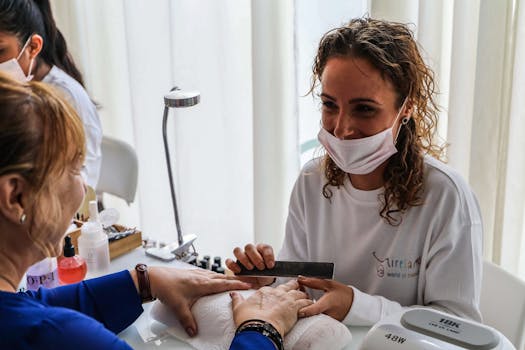If you’re exploring cosmetic procedures, you might be curious about what doctor does Botox. Botox, a popular non-invasive treatment, is known for its ability to smooth wrinkles and fine lines. But who exactly administers this procedure? In this article, we’ll dive into the types of doctors qualified to provide Botox injections, what the treatment entails, recommended dosages, and what results you can expect.
What Doctor Does Botox?
The term “Botox doctor” might be unfamiliar to some. Typically, dermatologists and plastic surgeons are the primary medical professionals who administer Botox injections. These specialists have extensive training in facial anatomy and can competently handle Botox treatments. Some general practitioners and other specialists may also offer Botox if they have the appropriate training and certifications.
Dermatologists specialize in skin care, making them well-suited for cosmetic procedures like Botox. Similarly, plastic surgeons, with their in-depth understanding of facial structure, are proficient in helping patients achieve desired aesthetic outcomes. When looking for a practitioner, it’s crucial to ensure that they are board-certified and experienced in administering Botox.
What Is Botox and How Does It Work?
Botox is a neurotoxin produced by the bacterium Clostridium botulinum. While dangerous in high doses, medical professionals use it in small, controlled amounts to reduce muscle activity. When injected into specific muscles, Botox temporarily paralyzes them, reducing the appearance of wrinkles. The effect typically lasts three to six months before the muscles regain activity, and wrinkles may begin to reappear.
Besides its cosmetic uses, Botox has several medical applications. It can help manage conditions like chronic migraines, excessive sweating (hyperhidrosis), overactive bladder, and even certain types of muscle spasticity.
Recommended Dosage for Botox Treatments
The dosage for Botox varies depending on the treatment area and the individual’s needs. Experienced doctors will tailor the dosage to ensure safety and effectiveness. For example, treating frown lines may require around 20 units of Botox, while addressing forehead lines could use 10-30 units. Crow’s feet, the wrinkles around the eyes, typically require around 12 units per side.
It’s essential that only a qualified and trained professional administers Botox to determine the appropriate dosage for effective treatment. Always discuss the treatment plan and any concerns with your doctor beforehand.
Expected Results from Botox
The results of Botox are usually visible within a few days following the procedure, with full effects appearing after one to two weeks. Patients commonly notice smoother, more youthful-looking skin. The results are not permanent; maintenance sessions are necessary every few months to sustain the effects.
Satisfaction levels are generally high among Botox users, as the treatment effectively diminishes the appearance of facial lines and enhances overall aesthetic appeal. It’s essential, however, to have realistic expectations and understand that each person’s experience might vary.
Exploring Other Cosmetic Procedures
Beyond Botox, individuals interested in enhancing their appearance may consider other cosmetic options. For example, fat transfer and breast augmentation are procedures that address body contouring needs. To learn more about these options, explore this guide on fat transfer and breast augmentation.
Finding the Right Botox Doctor for You
When searching for what doctor does Botox, it’s critical to choose a board-certified professional with extensive experience. Conduct thorough research and consult with potential doctors to discuss your goals and concerns. Evaluate their qualifications, patient reviews, and before-and-after photos of past patients.
Additionally, communicate openly with your chosen provider about your medical history and any medications you’re taking, as these factors can influence the treatment process and outcome. For more detailed information on Botox and its applications, consider visiting this informative page about Botox.
Understanding what doctor does Botox is essential in making an informed decision about your cosmetic journey. By choosing the right specialist, you ensure a safe and satisfactory experience, enhancing your confidence and aesthetic goals. Remember, the treatment’s success relies not just on the procedure itself but also on the expertise of the practitioner.
- Dermatologists and plastic surgeons are most commonly certified to administer Botox.
- Botox temporarily reduces muscle activity, smoothing out wrinkles.
- Results generally last three to six months, necessitating repeat treatments.
- It’s essential to have realistic expectations and open communication with your doctor.
- Consult with board-certified professionals to ensure safe and effective treatment.
Is Botox only used for cosmetic purposes?
No, Botox also has medical applications such as treating chronic migraines, excessive sweating, and certain muscular conditions.
What should I expect during a Botox consultation?
During a consultation, your doctor will assess your facial structure, discuss your cosmetic goals, and determine the appropriate treatment plan.
Are there any side effects of Botox?
Potential side effects include minor swelling, bruising, or tenderness at the injection site. Serious side effects are rare.
How do I choose the right doctor for Botox?
Choose a board-certified dermatologist or plastic surgeon with extensive experience and positive client reviews. An in-person consultation is ideal for evaluating compatibility.
How long does a Botox treatment session typically last?
A standard Botox session usually lasts around 10 to 15 minutes. It’s a quick procedure with minimal downtime, making it convenient for most patients.






